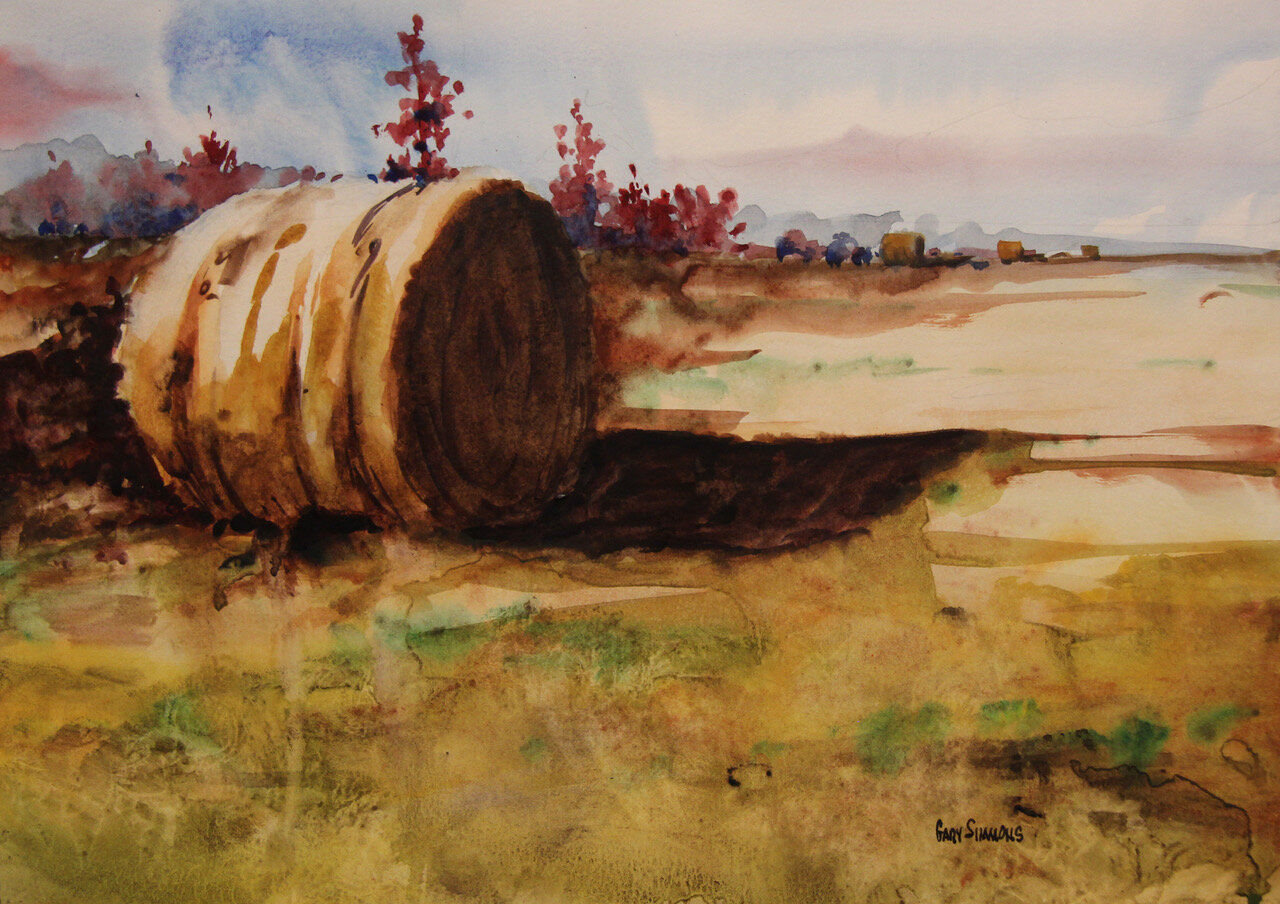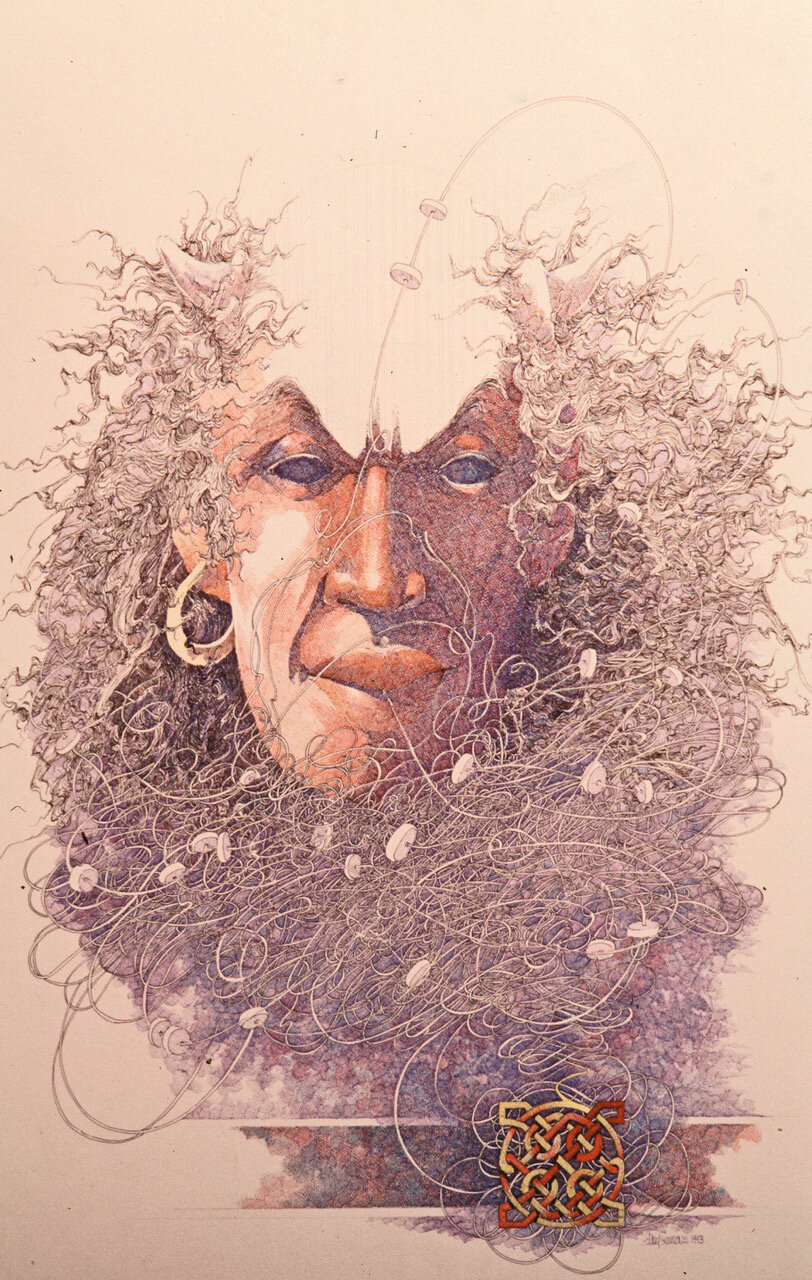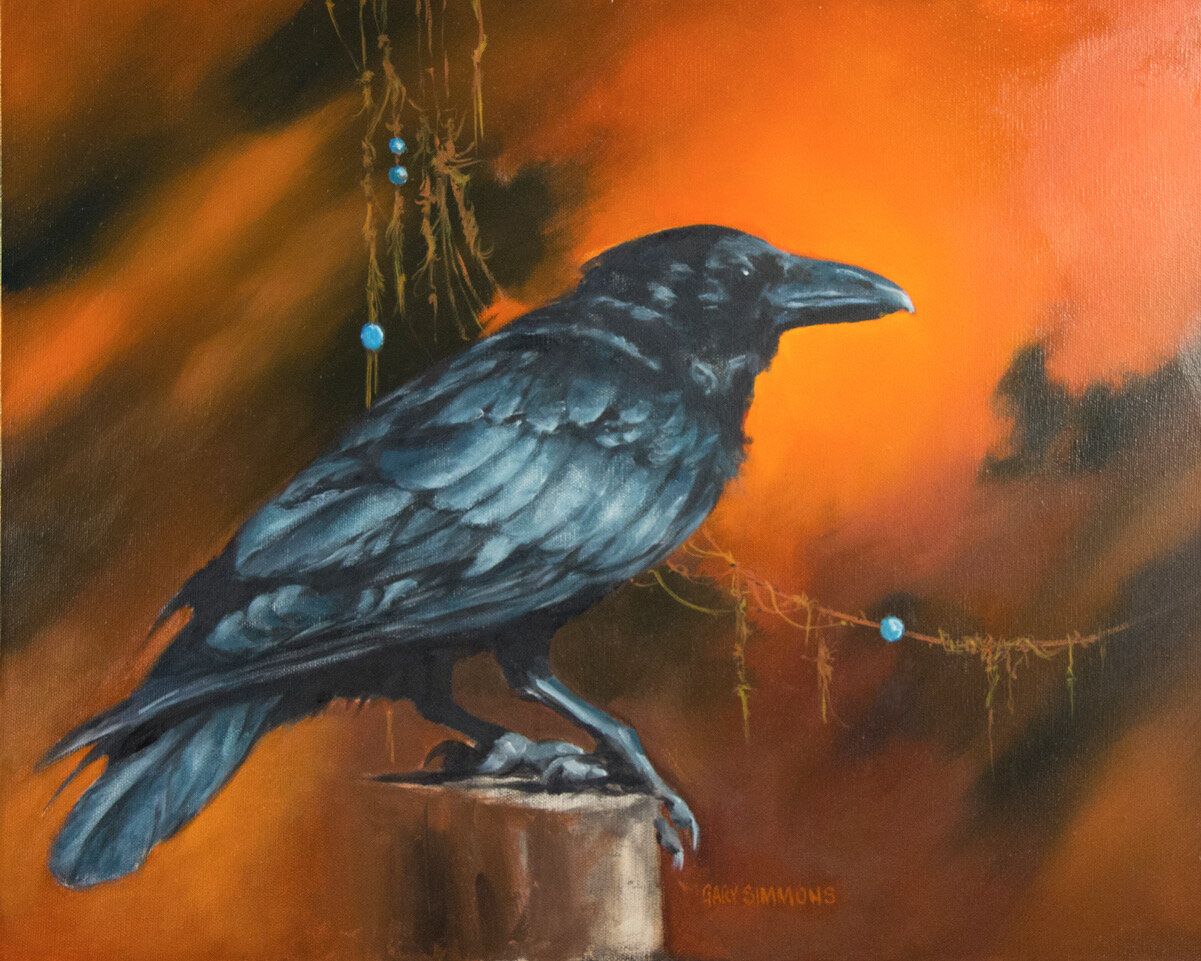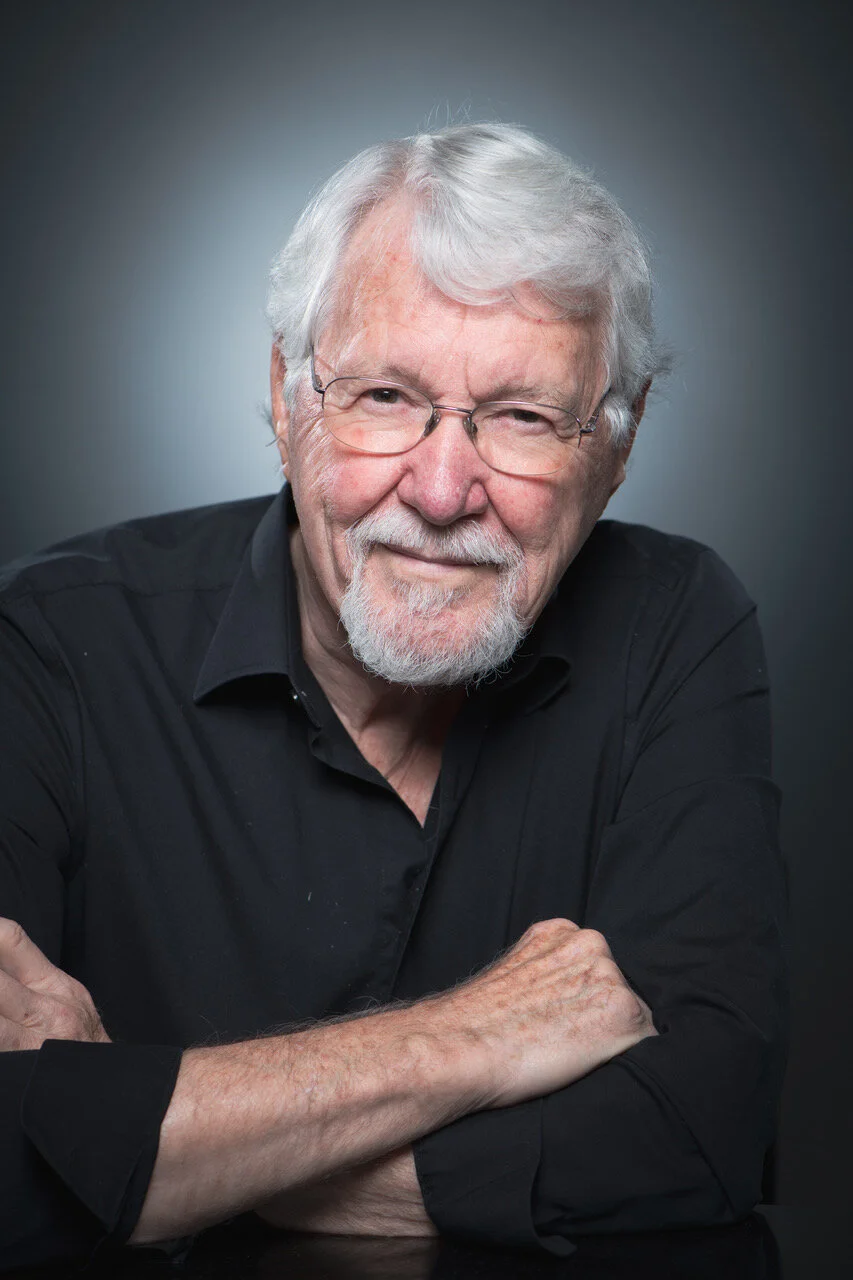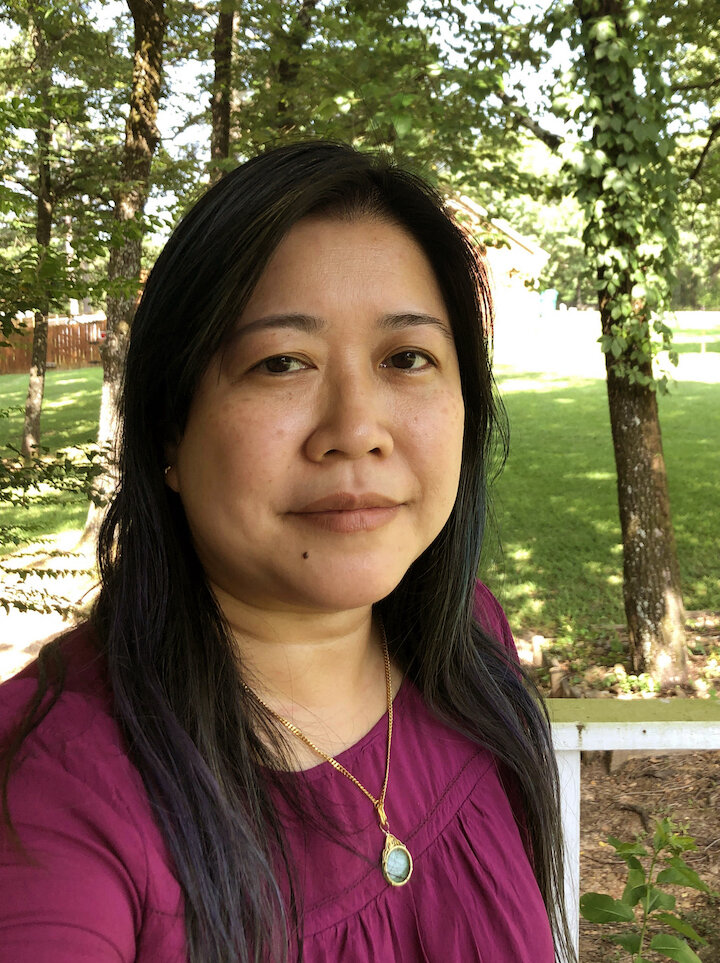Interview with artist Gary Simmons
Gary Simmons is an artist living and working in Hot Springs, Arkansas. Originally from Illinois, he moved to Arkansas in the 1970’s and eventually became a free-lance artist and full-time instructor of graphic design at Henderson State University in Arkadelphia until 2013 when he retired as Professor Emeritus. Gary continues to paint and draw and has earned national recognition for skills. He is in many corporate and private collections throughout the US and the UK. Gary’s work can be found at Justus Fine Art Gallery in Hot Springs and at his website simmonsart.com.
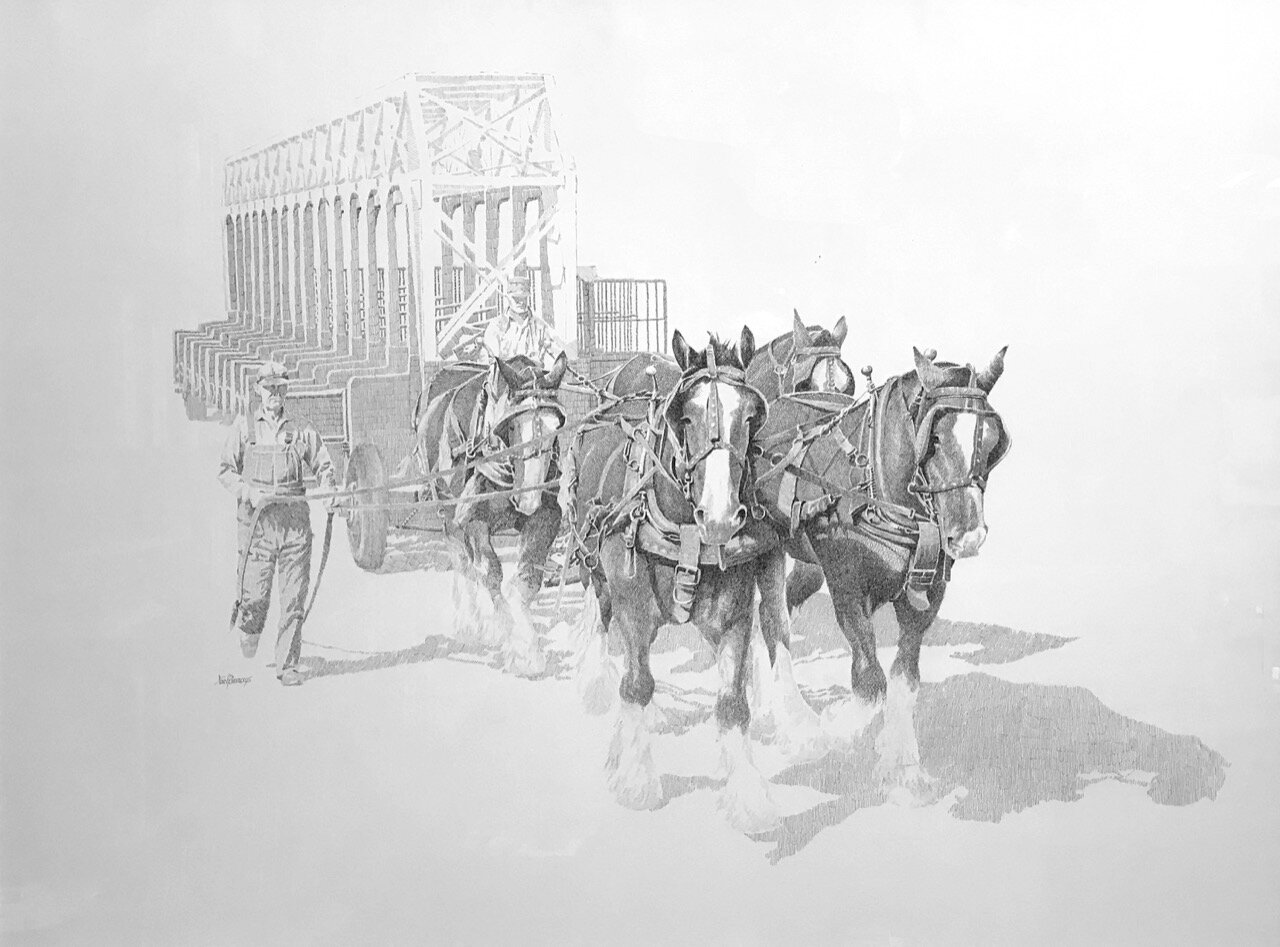
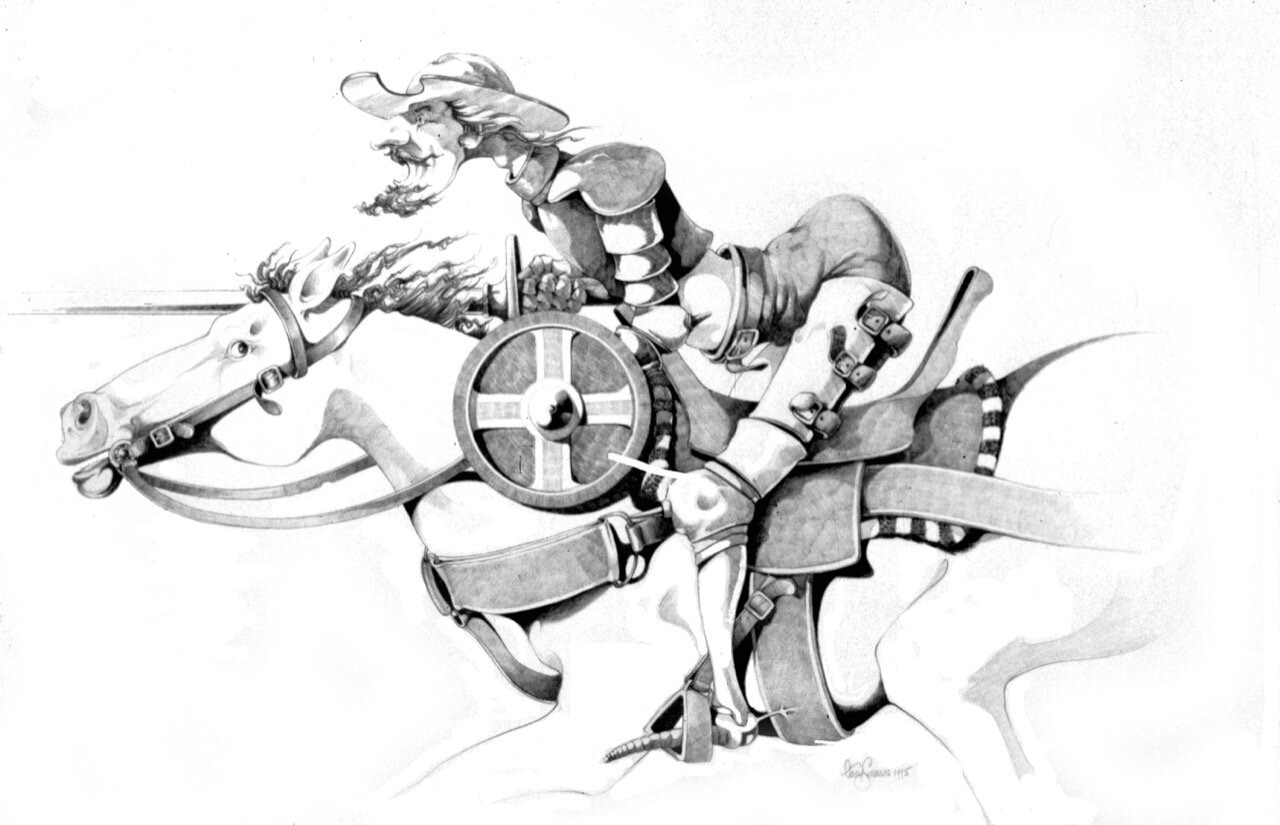
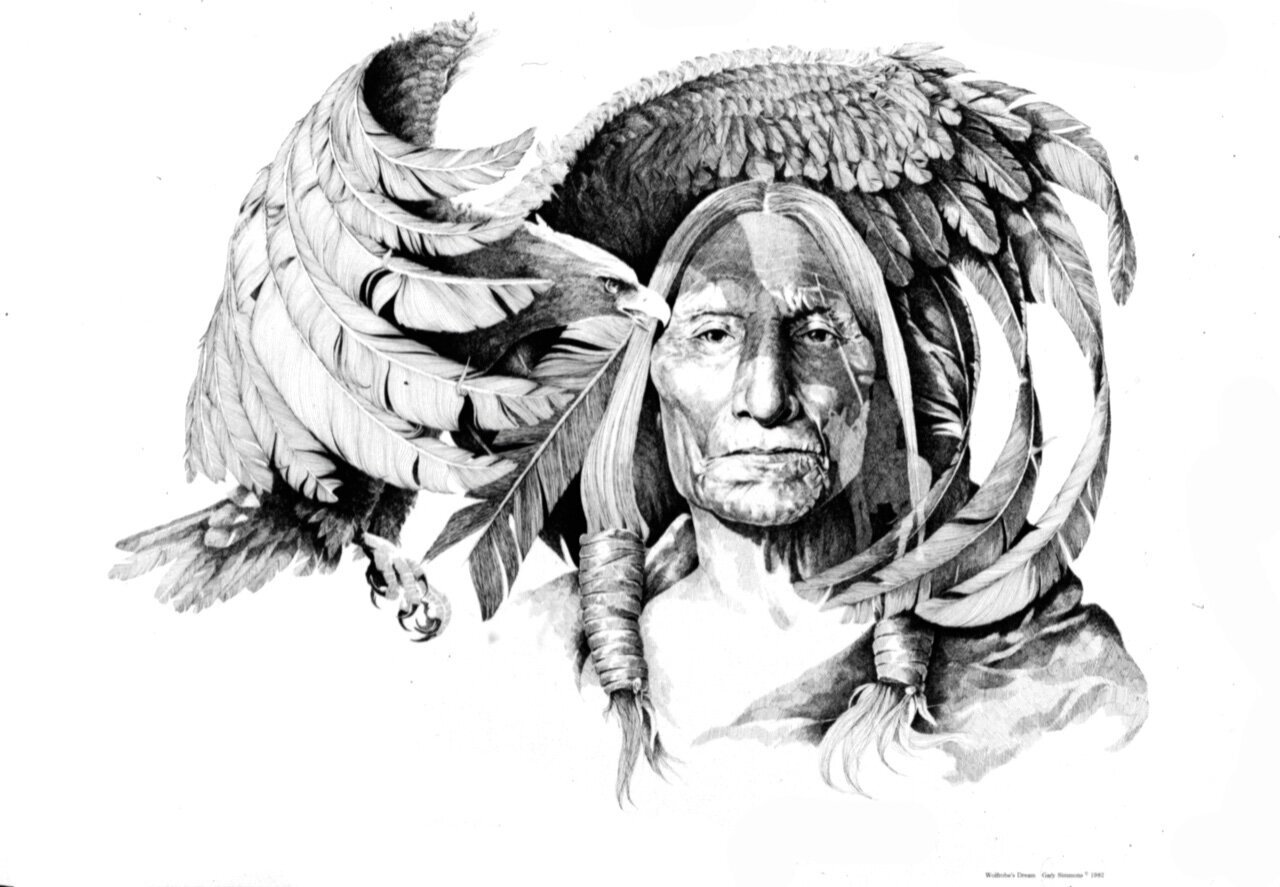
AAS: Gary, you have an extensive education including an EdD in Instructional Systems Technology from Indiana University. How did all of that lead you to Hot Springs and teaching at Henderson State University?
GS: I grew up in the 1950’s in Cahokia, Illinois, a typical small midwestern town with virtually no art presence in the town or in my middle-class home. Art for me was magazines, library books, drugstore posters, and starlet pinups. But I did have a mother who was completely supportive of my interest in drawing. She claims I always had a pencil in my hand. At about 8 or 9 years old I discovered line drawings of airplanes in coloring books and wanted to trace them. I realized I could see through waxed paper and my mother humored me by providing it.
At Southern Illinois University in Carbondale, I was directed to the Industrial Arts program mentored by Buckminster Fuller, who lived there in residence. The thrust of the program with its Bauhaus influence was to try everything so I did. After two years in the program, I changed my major to zoology and left that just short of a major to earn a BA in English. I then attended SIU’s Technical Institute for a semester in commercial art and returned to campus where I completed an MA in English and American Literature. I did another year of course work in zoology before leaving SIU to teach English for 2 years in Franklin, Indiana. The art bug wouldn’t leave me alone, so I went to Indiana University and started a doctorate in art education with a minor in fine arts photography, and ultimately switched departments for more photographic opportunities in Instructional Systems Technology where I earned an EdD. I was hired by a contract research firm at the university which led me to a similar position with the University of Arkansas’ Rehabilitation and Research Center in Hot Springs. I made the move to be closer to parents and siblings who all lived here. In 1976 I jumped ship and started a free-lance career as an artist, even though I wasn’t quite sure what that meant or entailed. I free-lanced for 10 years in 1985, co-owned Stephens and Simmons Design Studio for 5 years, and then taught pen-and-ink workshops for 3 years. In 1991 Henderson State asked me to consider applying to teach graphic design, which I did for the next 22 years. I came to accept that I loved teaching.
AAS: When did you discover your talent for illustration?
GS: In high school I became “the school artist” illustrating the yearbook, any letter I wrote, and painting murals on our bathroom and bedroom walls. In high school I had an Illinois State Scholarship and applied to Southern Illinois University in Carbondale, and on a whim applied to the Art Institute of Chicago and was accepted but chickened out from intimidation by the big city. I have wondered many times where that would have led me rather than the long path of self-instruction I eventually chose.
My calling was there all along, but I ignored it, I think in part, because I had no role models or mentors to help me define myself as an artist. I was influenced most by the illustrators of the day, namely Norman Rockwell, NC Wyeth and a host of artists who illustrated Life, Colliers, Saturday Evening Post, etc., My future as an illustrator began at SIU with a freshman work study position in the zoology department. They found I could draw, and I was given a pen and bottle of ink to draw for the science publications they were producing. I did this in several zoology departments throughout my tenure at SIU. It was exacting work and honed my pen skills as well as fashioning the literal way I look at things.
AAS: I interviewed Richard Stephens a few weeks ago and he mentioned the design studio the two of you had. You guys had a show together a few years ago in Hot Springs?
GS: I arrived in Hot Springs the fall of 1973 and knew no one. I found Arkansas Art and Frame run by Steve Boston who took me in as part of an artist group he had welcomed to hang art in his shop as well as to frame their work. Richard Stephens had recently returned to Hot Springs and saw my work in the shop and asked Steve to get us together. We met and hit it off and began doing some jobs together as well as helping grow an artist community that was beginning to emerge. For ten years we joint ventured commercial work and during that time I was introduced to other commercial artists through Richard, all of whom I have to thank for mentoring me. Richard and I have worked together, shown together, taught together, and juried together. We are the closest of friends in spite of running a Design Studio together and dissolving it to follow our own paths. We even traveled recently to Paris for the art.
AAS: Would you talk about your book, The Technical Pen, recently re-released in paperback.
Cover of the instructional book The Technical Pen
GS: The book was first published in 1992 and was sold by Watson-Guptill for about 13 years after which it was picked up by Echo Point Books in 2013. I realized at some point that doing a drawing involved thousands of decisions the viewer never knew about or recognized and the idea of a book was spawned. For several years I kept a tablet on the right side of my drawing board and when I made a decision I thought was important to the drawing I would note it. Over the years I had a comprehensive list of these decisions. While teaching pen-and-ink workshops for Koh-I-Noor Rapidograph I began circulating on the national stage with art conventions, suppliers, and other artists. From this came Watson-Guptill’s request to Koh-I-Noor for an artist who could write a book on the technical pen. As someone who depended a lot on self-help literature, I was always struck by the lack of the nuances that are the difference in understanding a process or not. It’s a bit like a cookbook that simply says, “Get a pot,” ignoring all the difference the right or wrong pot might make. I tried very hard to address those things I had discovered in my own journey.
AAS: Gary, let’s talk first about the extraordinary portrait, Walter Morris, done in ink. Who was Walter Morris and would you describe your approach to his portrait?
Walter Morris, 30” x 40”, ink on paper
GS: This is the husband of philanthropist Dorothy Morris, who commissioned the work that hangs in the chapel of the Arkansas Sheriff’s Ranch. He was a renowned Wall Street investment banker, friend of theologian Reinhold Niebuhr, and a philanthropist. He and Dorothy created the Morris Foundation when moving to Arkansas in 1996. He died in 1999 and Dorothy built Morris Chapel in his honor. The drawing is based on a newspaper photo Dorothy had. It’s her favorite picture of him. Based upon the photo and Dorothy’s description of Walter, I wanted a sense of confidence and serenity, even contemplation in the portrait. I like the sweeping shapes in the background, perhaps a reflection of all that’s going on in his thoughts. It is large for pen-and-ink at 30 by 40 inches. I first drew the image in pencil with particular attention to the little nuances that make the image breathe. The pen cross hatching is layered, starting with the first layer in the darkest shapes which will then continue to appear and darken as additional layers are added. Consistency of line is critical to keep the strokes speaking of tone rather than texture. It’s very easy to create a hairy cheek rather than a smooth one in shadow.
AAS: Another amazing piece is Paradise Lost. It is a large piece and a drawing tour de force, really. What is the story behind it?
Paradise Lost, 40” x 30”, ink and watercolor on paper
GS: One of the things I learned very late was that pen-and-ink is traditionally a small medium, so the frequent 30 by 40 inch drawings I did were unusual for their size, if for no other reason. I believe all things we do, learn, and experience in our lives show up one way or another in what and who we are. My zoological training has been a mainstay in my work from the beginning. I have a particular interest in the great apes, in their apparent intelligence and kinship with us. I remember sitting at the St. Louis Zoo and watching a silverback idly rolling a wad of paper into a ball under his large index finger as he stared out at me, when he cocked his finger and thumb and flicked the wad away with an expression of absolute boredom. It was such a candid and human-like gesture that I still remember it. Paradise Lost developed from a vivid dream I had where a large silverback was staring at me and disintegrating from the chest down in a lacy pattern, and I thought in the dream, “This is about destruction of habitat.” Obviously, the focus is on the eyes, but the head’s fragmenting and the hair’s sweeping out reflect the dream. The implied crucifix and entanglements of strings allude to our complicated and often hypocritical professing for our love of all creatures. The image takes me back to the book Ishmael and the gorilla’s wisdom that transcends our own. This piece was a gift for my daughter’s graduation from veterinary school.
AAS: While perhaps you are best known for your pen and ink drawings, your watercolors have earned many awards especially at the annual Mid-south Watercolorists juried exhibitions. American Skyline is one of my favorites and brings back memories from growing up in south Louisiana. It is wonderful piece.
American Skyline, 22” x 15”, watercolor on paper
GS: One my regrets in old age is knowing I will die before I see our landscape rid of countless wires festooning our every view. I once sat in a café and counted each wire I could see from that one view. It was somewhere in the neighborhood of 50 wires. I had to quit such activity. It was making me nuts. On the other hand, structures like power poles hung with fuses, transformers, and other nameless shapes, standing starkly against the sky and linked with calligraphic sweeps of line are irresistible compositions. They’re a bit like our culture’s dark monuments to convenience above all else. I added the shoes, partly because I needed the design element and partly because I like the irreverence shown toward this blight on our landscape.
AAS: The Night It All Came Together is a lovely and poignant piece where you used both ink and watercolor. That piece must have an interesting backstory.
GS: While in Indiana my wife and I had an occasion to adopt a screech owl blown from the nest in a storm. It came to us as a round puff of white down, two large eyes, and a beak. Throughout the summer from April to September, we reared him in the house, feeding him moths, dead baby birds, and organ meat. He feathered out and learned to fly, navigating the hallways, TV aerials, and furniture easily in spite of his 3-foot wingspan. He was a character and became an important part of our life, but the time came for us to move to Indiana University and we knew he had to be set free. We lived in small hickory woods on a dairy farm, so we introduced him to the wild. He showed up on our bedroom window screen about 5 a.m. the next morning. For a couple of weeks, he stayed in the house during the day and went out during the night. Eventually he became wilder and wouldn’t come to me for food, and soon we didn’t see him at all. The night I loaded a U-Haul trailer at our front door under the yellow glow of the porch light, he suddenly was sitting on the open door of the trailer where he stayed throughout my loading. I occasionally gave him a moth, but he seemed content to just watch. I closed the trailer door at which point he flew up into the trees. As I walked out into the darkness of the yard, I felt his feet were suddenly on my shoulder where he had once been so familiar. Eventually he lifted off and I never saw him again. It was as though it had all come together as it should be.
The Night It All Came Together, 20” x 30”, ink and watercolor on paper
Becky, 30” x 24”, oil on canvas
AAS: You also have some gorgeous oil paintings. One of my favorites is Becky. Would you talk about that piece?
GS: My younger daughter Becky was a delight as a child and always up for adventure. I had an old pickup truck I needed to move out of the driveway, and she wanted to ride in the bed. With no traffic and driving very slowly, I let her sit on the edge of the bed right behind me. In the side mirror I saw her grinning face in a halo of white hair rim lighted by the setting sun behind her. I don’t know who was the happier, her or me.
AAS: You have done so many commemorative portraits like those of Bill and Hillary Clinton, Frank Broyles and many other. What do enjoy about portraiture?
GS: There are few things more interesting than the human face. It is indeed the pilothouse for the ship and tells us so much about what is going on in that person. During life drawing I often concentrate on the face more than the body for this very reason. Portraiture is a chance to investigate people on levels that are normally out of reach or out of bounds for outsiders. Most of the portraits I did were 30” x 40” drawings that incorporated five to seven different views of the person, including artifacts of importance to their lives. I began writing a manuscript to accompany the portrait because there were many observations I couldn’t include visually. These manuscripts became as important as the drawings. Subjects were surprisingly candid answering my questions as I photographed them. The session was essentially a dialogue and the camera just happened to be there.
AAS: Is drawing as exciting for you now as it was when you first started as a professional?
GS: If I have a forte as an artist, it is drawing. This is perhaps a combination of how I came to art and of who I am as a personality. My journey into art has been pretty solitary and initially confined to whatever discoveries and tools I could find on my own. The simple expediency of a pencil and a sheet of paper were conducive to an available opportunity for practice. My introduction to the pen extended this same opportunity to more elaborate nuances, but still concentrated on line work. Added to this was the science illustration that honed my observation skills and ultimately created for me a considerable confidence in my drawing ability. Drawing is ultimately discovering, and this appeals significantly to my curious nature. To this day there is no more fun for me than drawing. Even if there is no specific image I enjoy making and seeing a line emerge on the paper. It is visceral for me. For more than 60 years it has been my main source of identification and satisfaction as an artist.
“I think my art reflects my interest in and my need to communicate about both the wonders and the mysteries of this experience we call Life.”

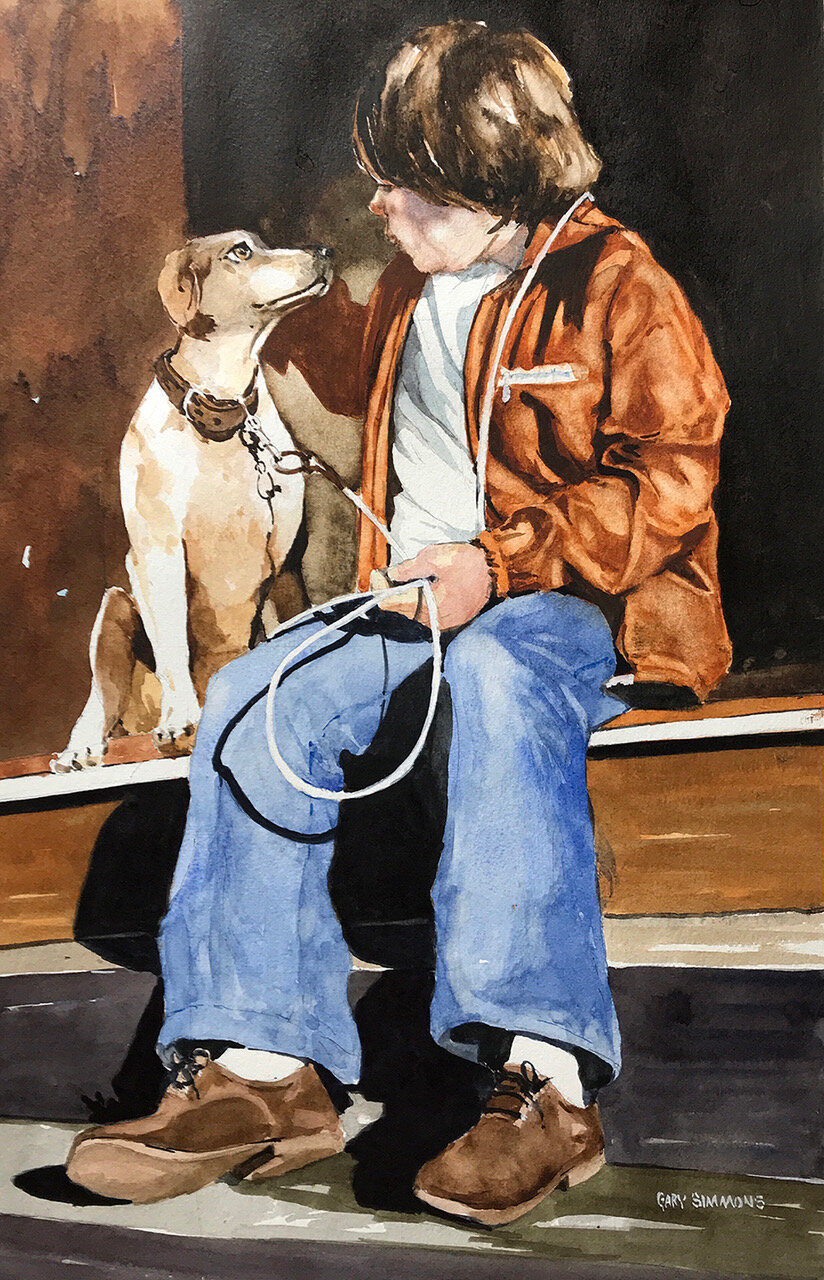
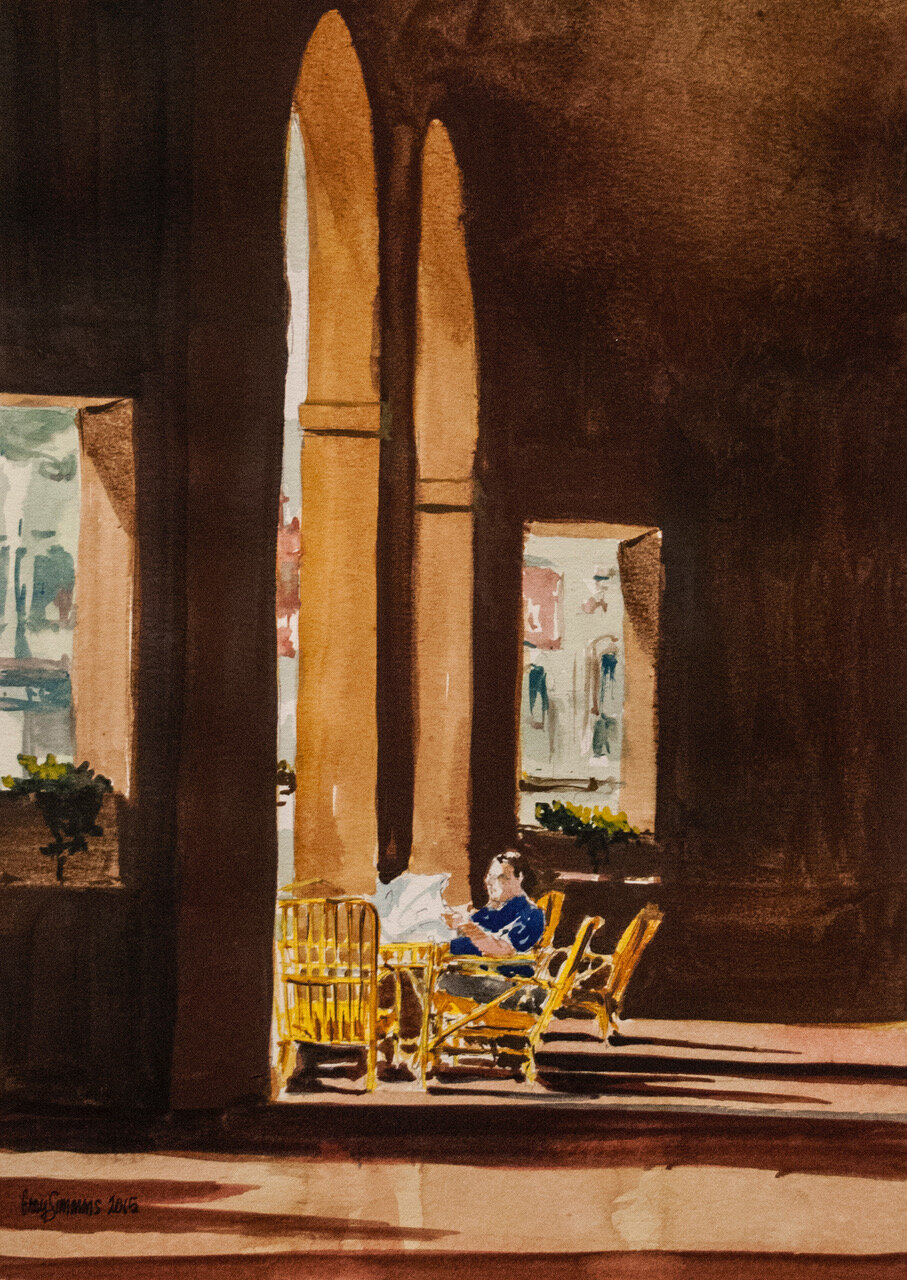
AAS: This may not be a fair question, but do you have a favorite medium or does the subject of the piece call out to you ink or watercolor or oil?
GS: My choice of medium really depends on different things. For sheer comfort and confidence, I rely on the pen. I still like very much the excitement of dark lines against a white page and the graphic electricity that they can generate. I like the richness of pastel when I want real saturation and don’t feel confident to do it in oil. I like oil for the feel of the brush and the texture that comes with oil. There’s something very sensual about its application. I still feel intimidation with all the potential issues with oil, and since I am not prone to heavily processed techniques, I am impatient with learning what I need to learn. Watercolor is truly exciting when it meets my expectation, and part of that is the gamble taken with each choice of color, value or stroke. I realize my limitations with the medium, but I am just good enough to make excuses for myself while still knowing in my heart what isn’t working. I like charcoal for a chance to really charge into dark values and to be very physical with the medium. It’s a medium that invites me literally to a hands-on approach.
AAS: Your love of literature and poetry have been sources of inspiration for many of your pieces as has the mythology of flight. Why do you think that is and what do you think your drawings and paintings reveal about yourself?
GS: I’m a romantic bottled up in an organized mind. I think the time I spent in the Industrial Design courses influenced me much more than I realized. The entire curriculum was an intense exploration of virtually everything in our world. It encouraged lateral thinking, experimentation, and above all, an objective view of the connections, obvious, subtle, and potential, among all things. In my experience, art, literature, philosophy, and science all spring from the same creative wells. For example, flight is one of nature’s all-time miracles. Looking at the intricacies of a feather suggests the wonders of evolution, which also suggest our own journey through time, and that in turn points to superstitions, mythologies, and religions we have created as answers, only to forget that we created them in the first place and now accept them as divine revelations. I love the complexities and implications of this thread through life, but I am also an observer and have to live with some of its darker realities. But even those have their place in the scheme of things. I think my art reflects my interest in and my need to communicate about both the wonders and the mysteries of this experience we call Life. Joseph Campbell hit the nail on the head when he said we are all part of The Grand Pageant.
